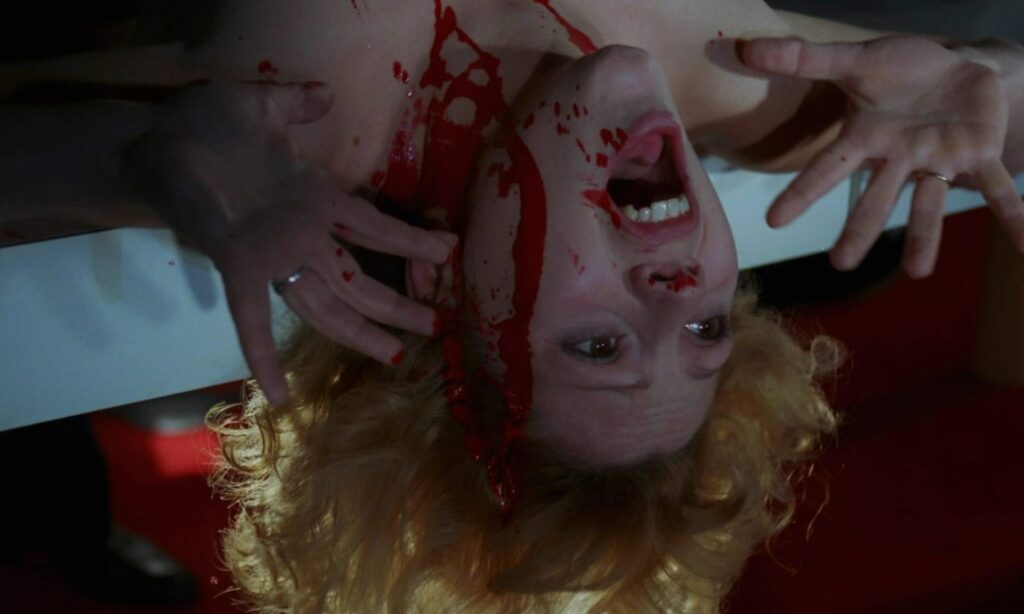
Jean Rollin’s film La Nuit des Traquées (1980) follows a woman, Elizabeth (Brigitte Lahaie), experiencing total memory loss after accidentally being exposed to a radiation leak at a power plant. French authorities have isolated the victims in an apartment block where their rapid deterioration is supervised by Dr. Francis (Bernard Papineau). In a fruitless bid to assert her autonomy and escape certain doom, Elizabeth escapes only to be apprehended and attempt to escape once again.
The loss of memory that Elizabeth experiences in La Nuit des Traquées is absolute. Character and context exists for the victims of this radiation leak only when the victims are actively engaged with other human beings. Allegorically speaking, Rollin reduces Elizabeth too little more than a single frame of film whose existence only takes on meaning and purpose within the greater cinematographic tableau. Every victim is essentially one frame of a film, one image, that is defined by its juxtaposition with the frame or person that comes before and after.
The existential crisis that is Elizabeth’s existence is constantly mirrored in how others react to her. Robert’s (Vincent Gardère) profound loneliness and helplessness merely articulates what Elizabeth experiences but cannot express. The same is true to varying degrees of everyone Elizabeth encounters. She, the isolated image, means whatever the spectator perceives. Yet Elizabeth cannot take ownership of these perceptions. All she can do is to build a fiction for herself in collaboration with the likewise afflicted.
La Nuit des Traquées is very much a metaphor for the narrative metaphysics of the cinema but it is also an indictment of urban ennui and the failure of social and medical institutions in a contemporary culture mired by poverty and political scandal. Rollin’s first film of the eighties is one of terrifying detachment, isolation, and nihilistic dread. The Gothic landscapes and fairytale trappings of his seventies output has been replaced by the coldness of mid-century modernist architecture rendered in either a perpetual twilight or the complete blackness of night.
Rollin remains a tremendous stylist who can take a very institutional structure and turn it into a tension filled nightmare realm à la Shivers (1975). The dead spaces of La Nuit des Traquées that the victims of memory loss navigate in violent fits are devoid of any sense of humanity and life. Under the fluorescent glow even the soft core sex scenes become grotesque pantomimes of actual human behavior and emotional connection. The stillness and artifice of the claustrophobic environment where the victims are housed results in homicidal rages.
La Nuit des Traquées revisits Rollin’s preoccupations with sex and death but this time as a human symptom of political stagnation and rot. La Nuit des Traquées is not beautiful in the way that Rollin’s early vampire films were. The beauty in La Nuit des Traquées exists in the terrible decay that fills the modern spaces of our everyday existence. A Brutalist building assumes the terrifying wonder of an ancient Gothic castle, linking modes of human spiritual oppression across time and space in Rollin’s films. The manor in Fascination (1979) is no different from the Black Tower apartment block in La Nuit des Traquées.
